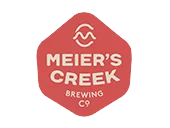It’s no secret that one of the biggest struggles for owners of beer, cider, and wine businesses is calculating and understanding COGS, or cost of goods sold. It can feel almost impossible to calculate without the data housed in an inventory management system like Ekos, and it’s one of the many reasons we see businesses make the switch from spreadsheets and paper records to software.
But when it comes to costs, it’s important to look at more than just the total volume of beer, wine, or cider produced. That’s where the Packaged Volume Cost Report in Ekos can help. This report was developed based on user feedback and with the help of financial experts from the craft beverage industry, including Ekos CPA partners Maria Pearman of GHJ Advisors and Chris Farmand of Small Batch Standard. We talked to Maria and Chris about why the Packaged Volume Cost Report is important and how Ekos users can benefit from reviewing the data regularly.
Responses have been lightly edited for clarity.
From a financial perspective, what insights can businesses gain from the two main costing reports in Ekos — the COGS report and the Packaged Volume Cost Report? How important is this data, and why?
Maria: The classic report, Cost of Goods Sold, is a great way to tie out the COGS in the general ledger software (QuickBooks, etc.). It can also be used as a quality control to make sure the data between Ekos and the accounting software agrees.
The Packaged Volume Cost Report allows users to see on a batch-by-batch level the outcome of what’s happening in the system. The report helps identify issues in production that would otherwise be difficult to diagnose. Usually when we see anomalies in financial data, it suggests an error in data entry or a process improvement that needs to be made.
Chris: The comparison of COGS by total volume versus packaged volume is HUGE. This information can lead to an investigation of efficiency — “Do we need to take action, or is our loss expected?”
Ideally, how should Ekos customers use the Packaged Volume Cost Report?
Maria: Customers should use the report as a quality control for their data. Inconsistencies will point to data errors that need to be corrected, issues with production, and/or low margin brands that should be further evaluated. The first pass should be done by the accounting department to look for anomalies in the data, and any anomalies found should be reviewed with the production team. This will highlight instances where materials were brought into the system at an incorrect unit price, recipes were entered incorrectly, or batches had an unusual amount of loss.
Chris: This report should be viewed in a three-month span. That way, you can see the same beer and package type as a sample over time, which will help uncover any issues.
What implications does the report have on users’ ability to make product pricing decisions?
Chris: This report is the starting point for a margin analysis. If the brewery can start with unit by packaged volume and add in labor, overhead, and a few other items, it will give them a fully loaded cost. From there, you can determine the margin and move on to the pricing conversation.
What kind of long-term financial impact could using this data regularly have on breweries and other beverage producers?
Chris: It all goes back to the margin analysis — this is the key driver for distribution. Businesses need to get as accurate a margin as possible to make decisions. This report will get them started on this.
Maria: I think the greatest long-term effects of reviewing this report have to do with improving operations. So many of the unusual results that I see in the report are the result of inadvertent bad data entry. If that is improved on an ongoing basis, it reinforces a culture of excellence.
Get Real-Time Business Insights With Ekos
With these two reports in Ekos, you can identify packaging loss and price your products to ensure a desired profit margin on the quantity of product you can actually sell. No other software on the market offers a similar pre-built report. At Ekos, we’re committed to developing features that make a real impact on our customers’ businesses. That’s why we seek user feedback regularly and consult with industry experts to ensure we deliver the most accurate, insightful solutions for beverage producers.
The Ekos product team was really open to feedback, both positive and negative. They seemed to want to provide as much value as possible to users.
Maria Pearman
If you’re an Ekos user and want to give our team feedback, head to the Community section of the Knowledge Base and browse current Product Feedback topics or post your own!
Learn More About Ekos
- Discover how Ekos helps you streamline inventory, production, sales, and accounting processes in your business.
- Take an online self-guided tour through Ekos in five minutes or less.
Request a personalized 20-minute demo at a time convenient for you.





